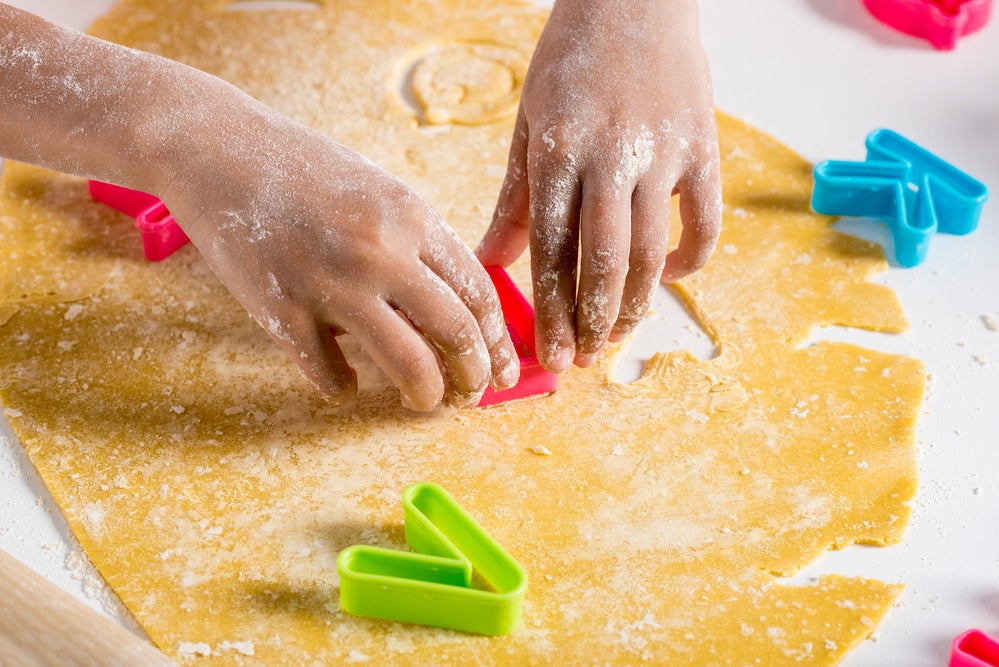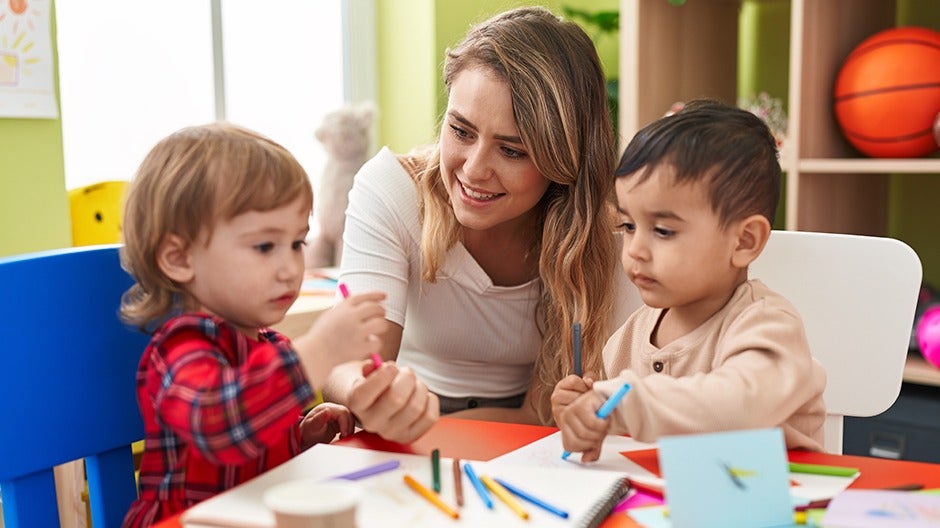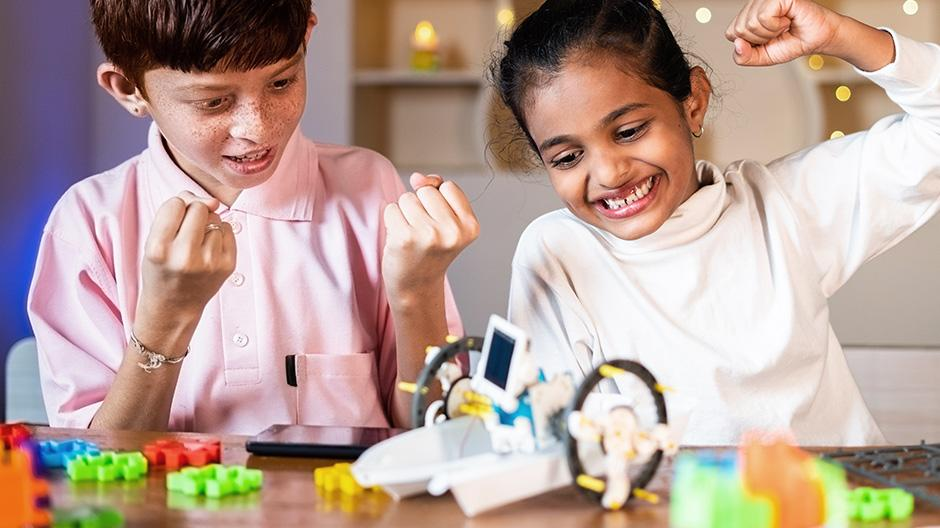With the abundance of information out there, it can seem like there are no clear answers about how to teach a child to read. Discussions over reading models can get heated and be hard to follow. As a busy parent, you may not have time to wade through all of the conflicting opinions.
We’re here to help!
The Short Cut
- Reading is a Core Skill, one of the 5 C’s at the heart of the Begin Approach to helping kids thrive in school and life
- The most effective ways to teach a child to read focus on phonics, can be done every day, and are fun for the child
- Just 15 minutes a day with our HOMER app improves early reading scores by 74%!
- Parents can help by teaching letter sounds, helping kids sound out words, practicing reading skills regularly, and talking and reading with kids frequently
Kids with strong reading skills do better in school, and reading unlocks the rest of the learning world. Once they can read, kids can turn to books (and the internet) to find new passions, experience unforgettable stories, explore new places, and engage with the world in new ways.
We’ve rounded up nine effective tips for teaching kids to read, to help you boost your child’s reading skills and confidence.
These tips are simple, easy to fit into your lifestyle, and help kids build foundational reading skills while having fun!
Tips for How to Teach a Child to Read
1. Focus on Letter Sounds over Letter Names
We used to learn that “b stands for ball.” But when you say the word ball, it sounds different than saying the letter b on its own. That can be a strange concept for a young child to wrap their head around!
Instead of focusing on letter names, we recommend teaching them the sounds associated with each letter of the alphabet. For example, you could explain that b makes the /b/ sound (pronounced just like it sounds when you say the word ball aloud).
Once they firmly establish a link between a handful of letters and their sounds, children can begin to sound out short words. Knowing the sounds for b, t, and a allows a child to sound out both bat and tab.
As the number of links between letters and sounds grows, so will the number of words your child can sound out!
Now, does this mean that if your child began learning by matching formal alphabet letter names with words, they won’t learn to match sounds and letters or learn how to read? Of course not!
We simply recommend this process as a learning method that can help some kids with the jump from letter sounds to words.

2. Begin with Uppercase Letters
Practicing how to make letters is way easier when they all look unique! This is why we teach uppercase letters to children who aren’t in formal schooling yet.
Even though lowercase letters are the most common format for letters (if you open a book at any page, the majority of the letters will be lowercase), uppercase letters are easier to distinguish from one another and, therefore, easier to identify.
Think about it—b and d look an awful lot alike! But B and D are much easier to distinguish. Starting with uppercase letters will help your child grasp the basics of letter identification and, subsequently, reading.
To help your child learn uppercase letters, we find that engaging their sense of physical touch can be especially useful. If you want to try this, you might consider buying textured paper, like sandpaper, and cutting out the shapes of uppercase letters.
Ask your child to put their hands behind their back, and then place the letter in their hands. They can use their sense of touch to guess what letter they’re holding! You can play the same game with magnetic letters.
3. Incorporate Phonics
Research has demonstrated that kids with a strong background in phonics (the relationship between sounds and symbols) tend to become stronger readers in the long run.
A phonetic approach to reading shows a child how to go letter by letter—sound by sound—blending the sounds as they go in order to read words that the child has not yet memorized.
Once kids develop a level of automatization, they can sound out words almost instantly and only need to employ decoding with longer words. Phonics is best taught explicitly, sequentially, and systematically—which is the method we use in the HOMER app.
If you’re looking for support helping your child learn phonics, our HOMER app might be exactly what you need. Just 15 minutes of HOMER a day improves early reading scores by 74%!
4. Balance Phonics and Sight Words
Sight words are also an important part of teaching your child how to read. These are common words that are usually not spelled the way they sound and can’t be decoded (sounded out).
Because we don’t want to undo the work your child has done to learn phonics, sight words should be memorized. But keep in mind that learning sight words can be challenging for many young children.
So if you want to give your child a good start on their reading journey, it’s best to spend the majority of your time on phonics, developing and reinforcing the information and skills needed to sound out words.

5. Talk a Lot
Even though talking is usually thought of as a speech-only skill, that’s not true. Your child is like a sponge. They’re absorbing everything, all the time, including the words you say (and the ones you wish they hadn’t heard)!
Talking with your child frequently and engaging their listening and storytelling skills can increase their vocabulary.
It can also help them form sentences, become familiar with new words and how they are used, and learn how to use context clues when someone is speaking about something they may not know a lot about.
All of these skills are extremely helpful for your child on their reading journey, and talking gives you both an opportunity to share and create moments you’ll treasure forever!
6. Keep It Light
Reading is about having fun and exploring the world (real and imaginary) through text, pictures, and illustrations. When it comes to reading, it’s better for your child to be relaxed and focused on what they’re learning than squeezing in a stressful session after a long day.
We want to give a gentle reminder that your child shouldn’t feel any pressure when it comes to reading—and neither should you!
Although consistency is always helpful, we recommend focusing on quality over quantity. Again, 15 minutes a day of HOMER’s reading pathway can increase early reading scores by 74%!
It may also take some time to find out exactly what will keep your child interested and engaged in learning. That’s OK! If it’s not fun, lighthearted, and enjoyable for you and your child, then shake it off and try something new.
7. Practice Shared Reading
While you read with your child, consider asking them to repeat words or sentences back to you every now and then while you follow along with your finger.
There’s no need to stop your reading time completely if your child struggles with a particular word. An encouraging reminder of what the word means or how it’s pronounced is plenty!
Another option is to split reading aloud time with your child. For emerging readers, you can read one line and then ask them to read the next. For older children, reading one page and letting them read the next page is beneficial.
Doing this helps your child feel capable and confident, which is important for encouraging them to read well and consistently!
This technique also gets your child more acquainted with the natural flow of reading. While they look at the pictures and listen happily to the story, they’ll begin to focus on the words they are reading and engage more with the book in front of them.
Rereading books can also be helpful. It allows children to develop a deeper understanding of the words in a text, make familiar words into “known” words that are then incorporated into their vocabulary, and form a connection with the story.
We wholeheartedly recommend rereading!

8. Play Word Games
Getting your child involved in reading doesn’t have to be about just books. Word games can be a great way to engage your child’s skills without reading a whole story at once.
One of our favorite reading games only requires a stack of Post-It notes and a bunched-up sock. For this activity, write sight words or words your child can sound out onto separate Post-It notes. Then stick the notes to the wall.
Your child can then stand in front of the Post-Its with the bunched-up sock in their hands. You say one of the words and your child throws the sock-ball at the Post-It note that matches!

9. Read with Unconventional Materials
In the same way that word games can help your child learn how to read, so can encouraging your child to read without actually using books!
If you’re interested in doing this, consider using play dough, clay, paint, or indoor-safe sand to form and shape letters or words.
Another option is to fill a large pot with magnetic letters. For emerging learners, suggest that they pull a letter from the pot and try to name the sound it makes. For slightly older learners, see if they can name a word that begins with the same sound, or grab a collection of letters that come together to form a word.
As your child becomes more proficient, you can scale these activities to make them a little more advanced. And remember to have fun with it!

Reading Comes with Time and Practice
Overall, we want to leave you with this: there is no single answer to how to teach a child to read. What works for your neighbor’s child may not work for yours––and that’s perfectly OK!
Patience, practicing a little every day, and emphasizing activities that let your child enjoy reading are the things we encourage most. Reading is about fun, exploration, and learning!And if you ever need a bit of support, we’re here for you! At Begin, we’re your learning partner. Start your child’s reading journey with confidence by downloading our award-winning HOMER app, or check out the rest of our parent resources for more tips and learning strategies.













